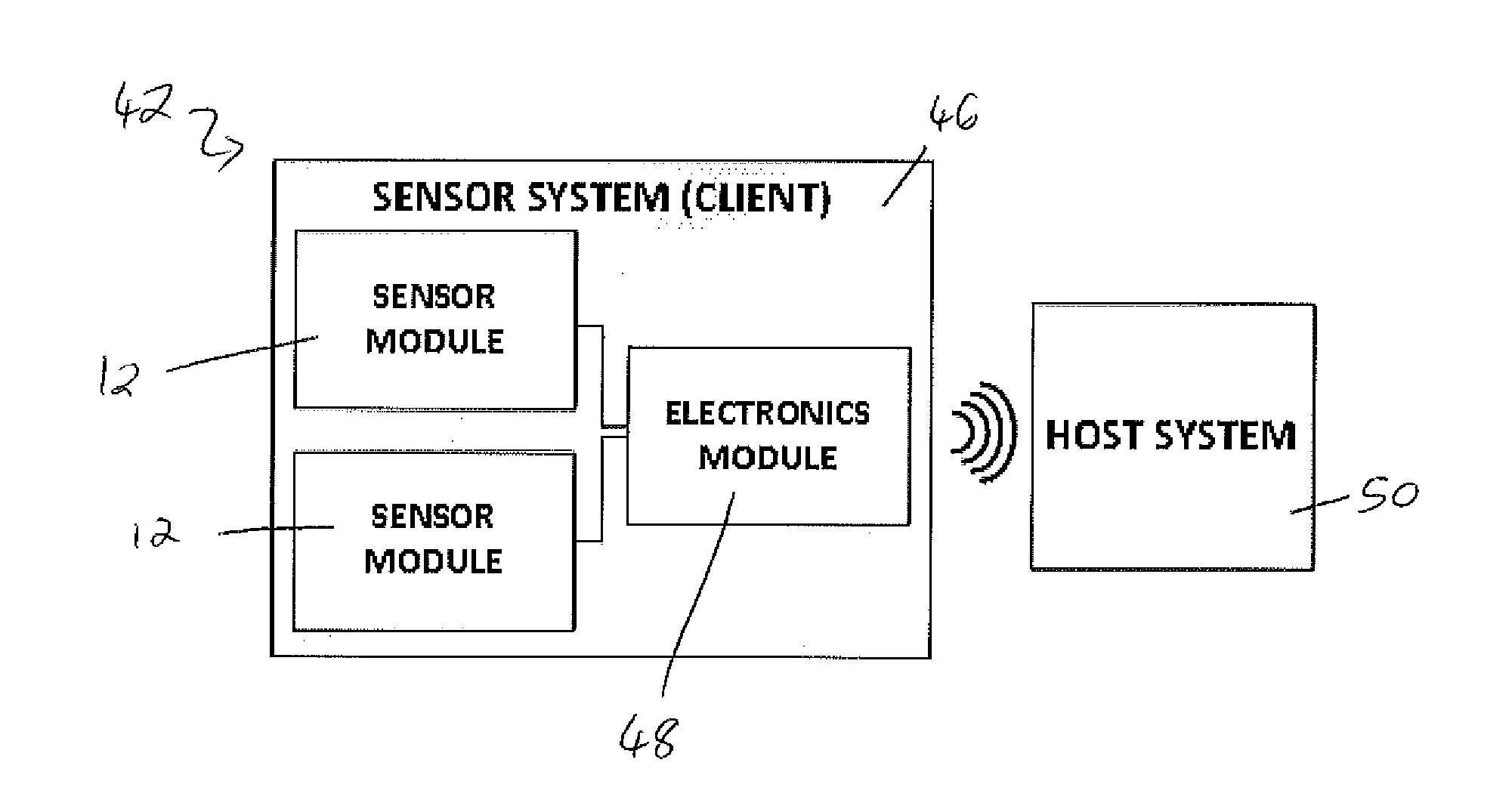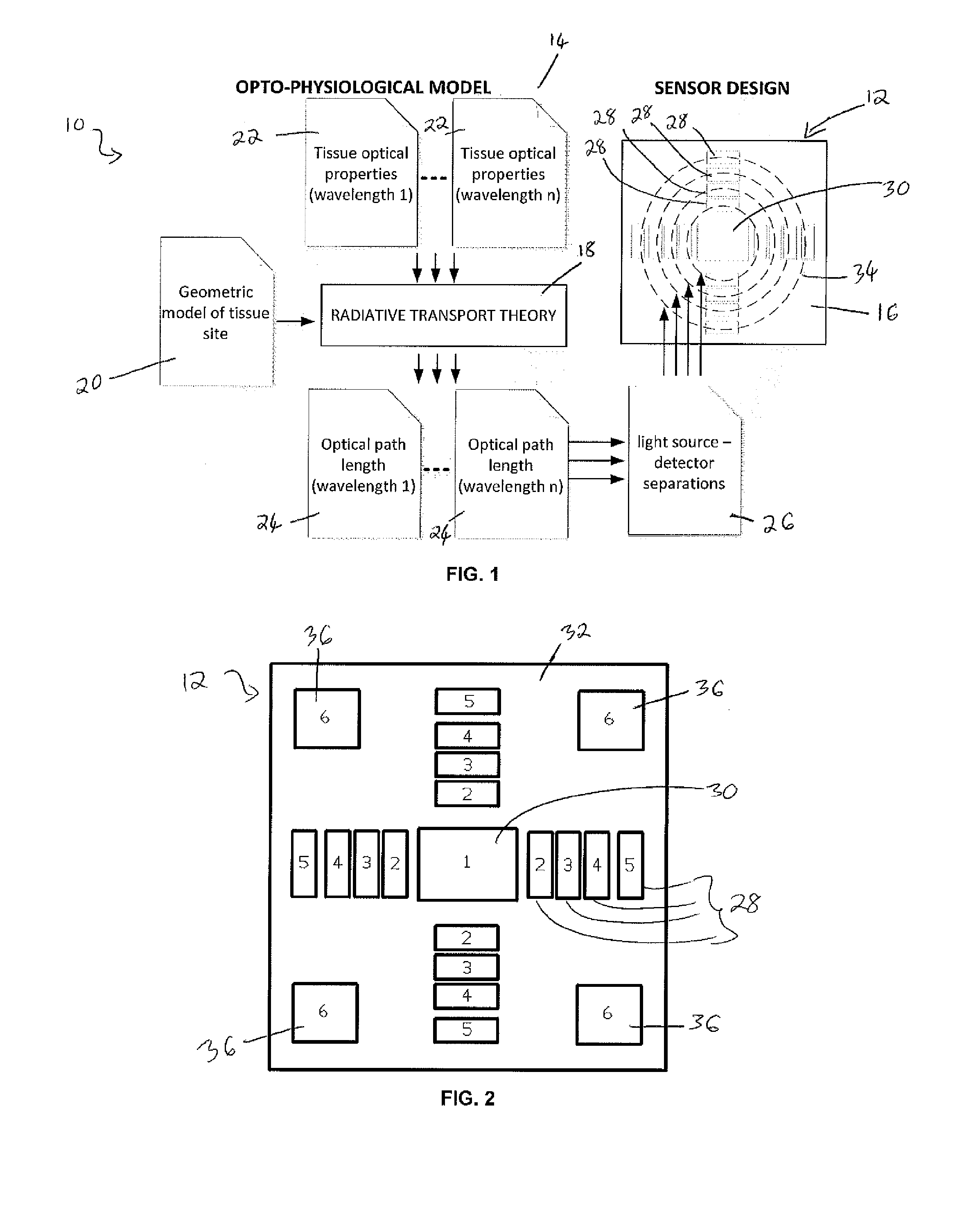Opto-physiological sensor and method of assembly
a sensor and optophysiological technology, applied in the field of optophysiological (op) sensors, can solve the problems of unpopular frequent use, no wearable sensor is currently available that can simultaneously measure a wider range, etc., and achieve the effect of saving energy, optimum reliability of output, and more accurate and reliabl
- Summary
- Abstract
- Description
- Claims
- Application Information
AI Technical Summary
Benefits of technology
Problems solved by technology
Method used
Image
Examples
Embodiment Construction
[0111]With reference to FIG. 1, there is illustrated a flow diagram 10 of a method of assembling (including designing) an opto-physiological (OP) sensor 12 in accordance with an embodiment of the present invention. The method comprises using an opto-physiological model 14 to mathematically model the opto-physiological properties of a body tissue type to be monitored and determining, through application of the model 14, an optimal optical design 16 for the opto-physiological (OP) sensor 12 so that it is operable to monitor the opto-physiological properties of the body tissue type. Thus, an aspect of the invention relates to a data-driven design approach for an optical sensing sub-system. Furthermore, the method includes making the OP sensor 12 to the determined optical design wherein the optimal optical design for the OP sensor 12 comprises: (i) determining the optimum separation of each of a plurality of light sources 28 from a photodetector 30, based on modelled optical path length...
PUM
 Login to View More
Login to View More Abstract
Description
Claims
Application Information
 Login to View More
Login to View More - R&D
- Intellectual Property
- Life Sciences
- Materials
- Tech Scout
- Unparalleled Data Quality
- Higher Quality Content
- 60% Fewer Hallucinations
Browse by: Latest US Patents, China's latest patents, Technical Efficacy Thesaurus, Application Domain, Technology Topic, Popular Technical Reports.
© 2025 PatSnap. All rights reserved.Legal|Privacy policy|Modern Slavery Act Transparency Statement|Sitemap|About US| Contact US: help@patsnap.com



